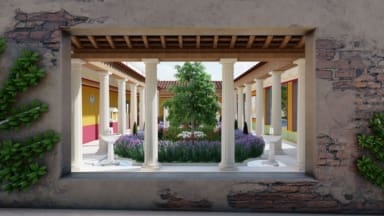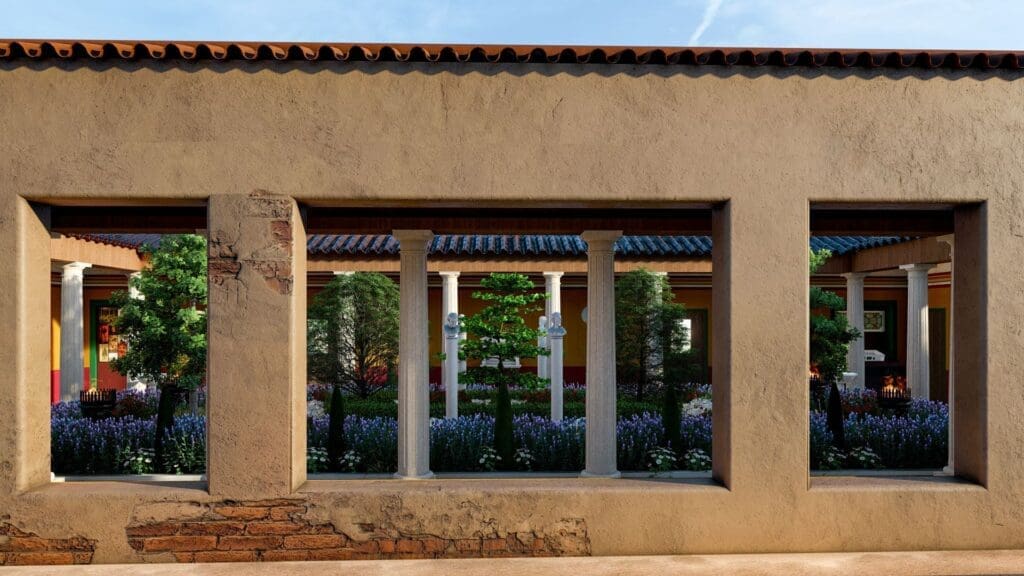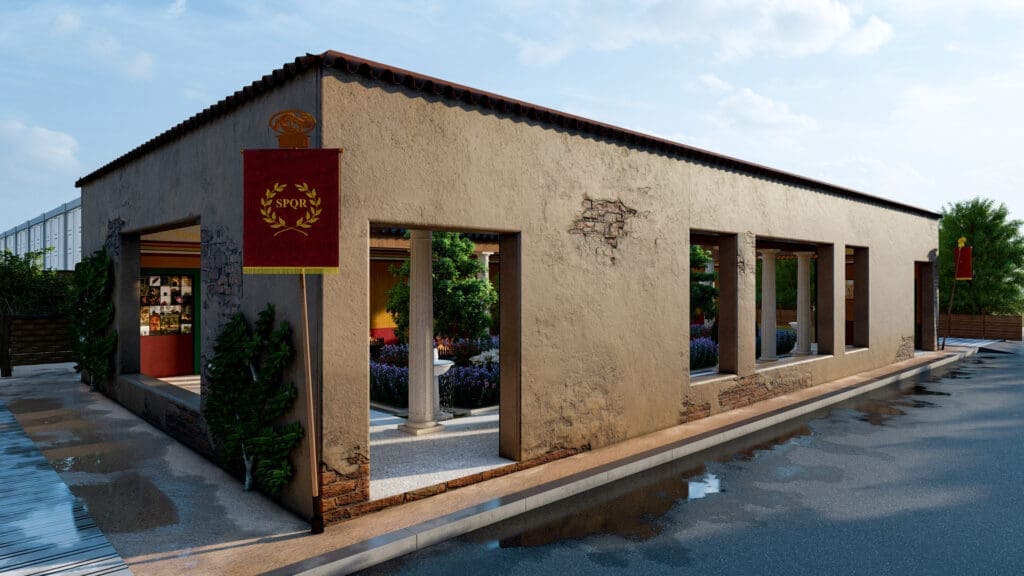
Headline sponsor for the third year, the Somerset based country estate hotel, the Newt in Somerset is creating a colourful peristyle colonnaded garden for the RHS Chelsea Flower show. Authentically reconstructed and the planting informed by the aesthetic and wellbeing choices of an urban Roman household, the RHS Chelsea garden is designed to encourage physical and mental wellbeing.
Designed by Katie Lewis, the Newt Estate Architect and Head Gardener, Stephen Herrington the recreated peristyle colonnaded garden circa 78 CE, promises to be one of the most authentic reconstructions of a Roman garden ever created – and the first of its type to appear at RHS Chelsea in the show’s 111-year history.
Every inch will showcase the Romans’ careful eye for design and the interplay between nature and architecture. Aesthetic choices of colour, fragrance and ornamental planting will create a moment of joy and repose, whilst medicinal planting will highlight the Romans’ knowledge of plants’ health and wellbeing properties.
The garden will be planted with 13 different types of flowers, plants and trees, informed by the popular choices of 1st Century AD. A mulberry tree takes centre stage, flanked by wild cherry and pomegranate trees on either side. Chamomile and lavender have been chosen for their relaxing, soothing properties, whilst opium poppy has been selected for pain relief, thyme to relieve coughs, colds and infections and madonna lily to treat ulcers and external burns.
Stephen Herrington said: “Planting in the horticultural traditions of the Roman Empire has been a fascinating journey. Drawing on our team’s passion and expertise, we are aiming to convey to the modern visitor the sense of joy that the Romans would have derived through the scent and colour of their gardens.”





The RHS Chelsea garden is what would have been that of a typical flourishing household at the height of the Roman Empire, which functioned as an extension to the villa’s internal space, offering a contemplative, integral space, providing light, colour, fresh air and natural fragrance.
Katie Lewis, Estate Architect at The Newt in Somerset and Co-Designer, said: “There is much to learn from the Romans, who were early pioneers in creating beauty through the precise interplay of nature with architecture. We hope that visitors to this year’s RHS Chelsea Flower Show will be inspired by stepping back in time with us.”
Structural elements of the Roman Garden
From a decorative perspective, four Roman Herms (sculptures) will create a focal point with fountains placed at each corner of the garden and braziers positioned at each end. The central garden will be encircled by a water channel, effective for collecting rainwater and irrigating the plants. The walls enclosing the courtyard will be decorated with frescoes, which were typical of the period.
After the show, the plants will be returned to Somerset, whilst the structural elements will create a temporary exhibit within the 14th Century Vignamaggio wine estate in Florence, Italy – which reportedly has links to both Leonardo da Vinci and the Mona Lisa herself. Following a decade-long restoration, this 65-acre estate with Renaissance villa and gardens will become a hotel, highlighting the evolution of gardening techniques from Renaissance through to modern times.
Villa Ventorum
Honouring the Newt’s gardening traditions, the team’s inspiration for the garden is founded in the Newt’s Villa Ventorum – the recent reconstruction of a 4th Century AD Roman Villa. Villa Ventorum, meaning ‘Palace of the Winds’, opened in 2022 at the Newt in Somerset as a pioneering archaeological and educational experience. The life-size replica of the ruins of a Romano-British Villa dating back to 351 AD, includes; rooms, kitchens, working Roman baths and a vineyard garden spanning an area of approximately 10.5 acres. The Roman Villa is located alongside visitor centre and museum, carefully positioned over the original villa’s foundations and ruins.

